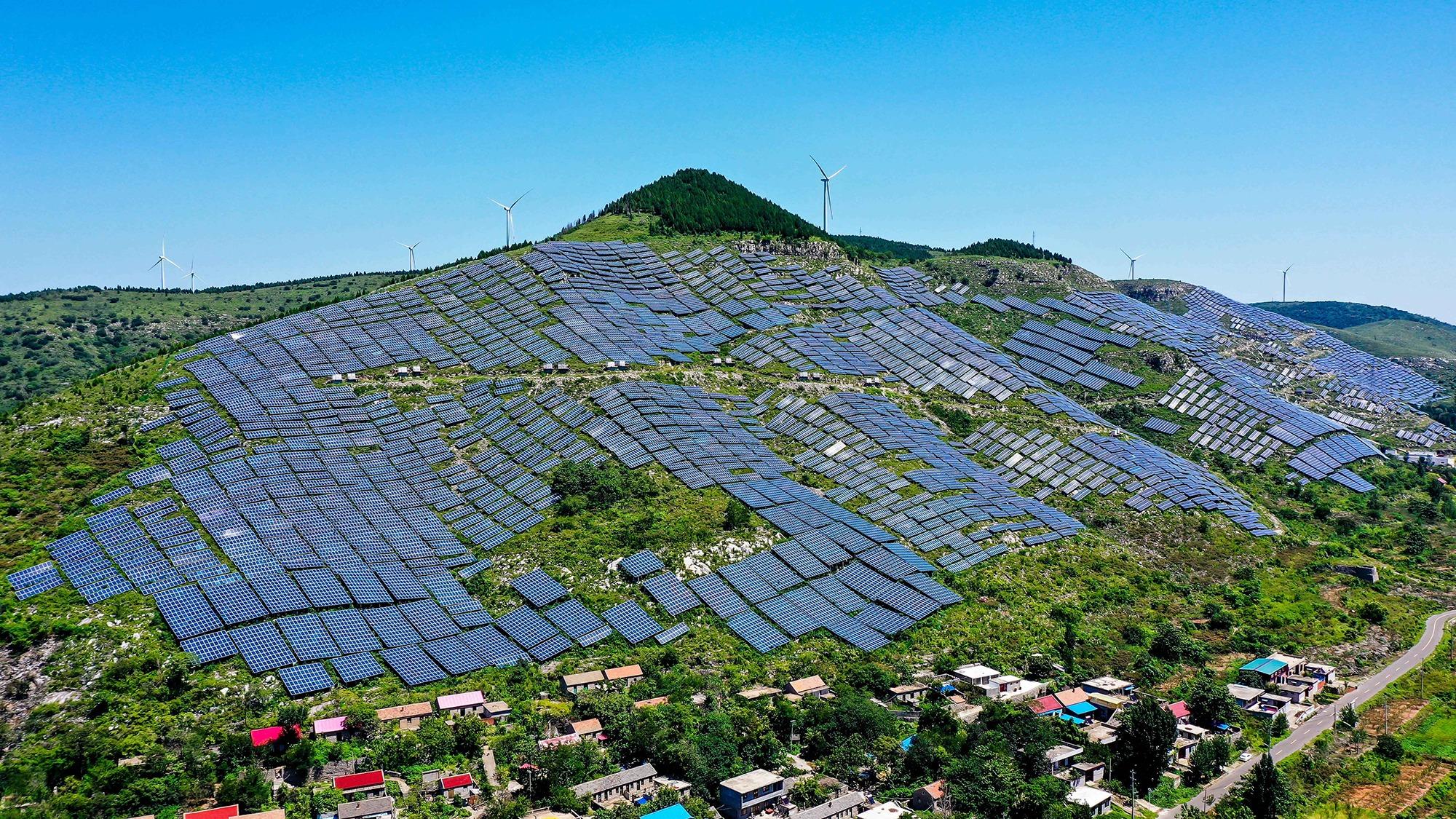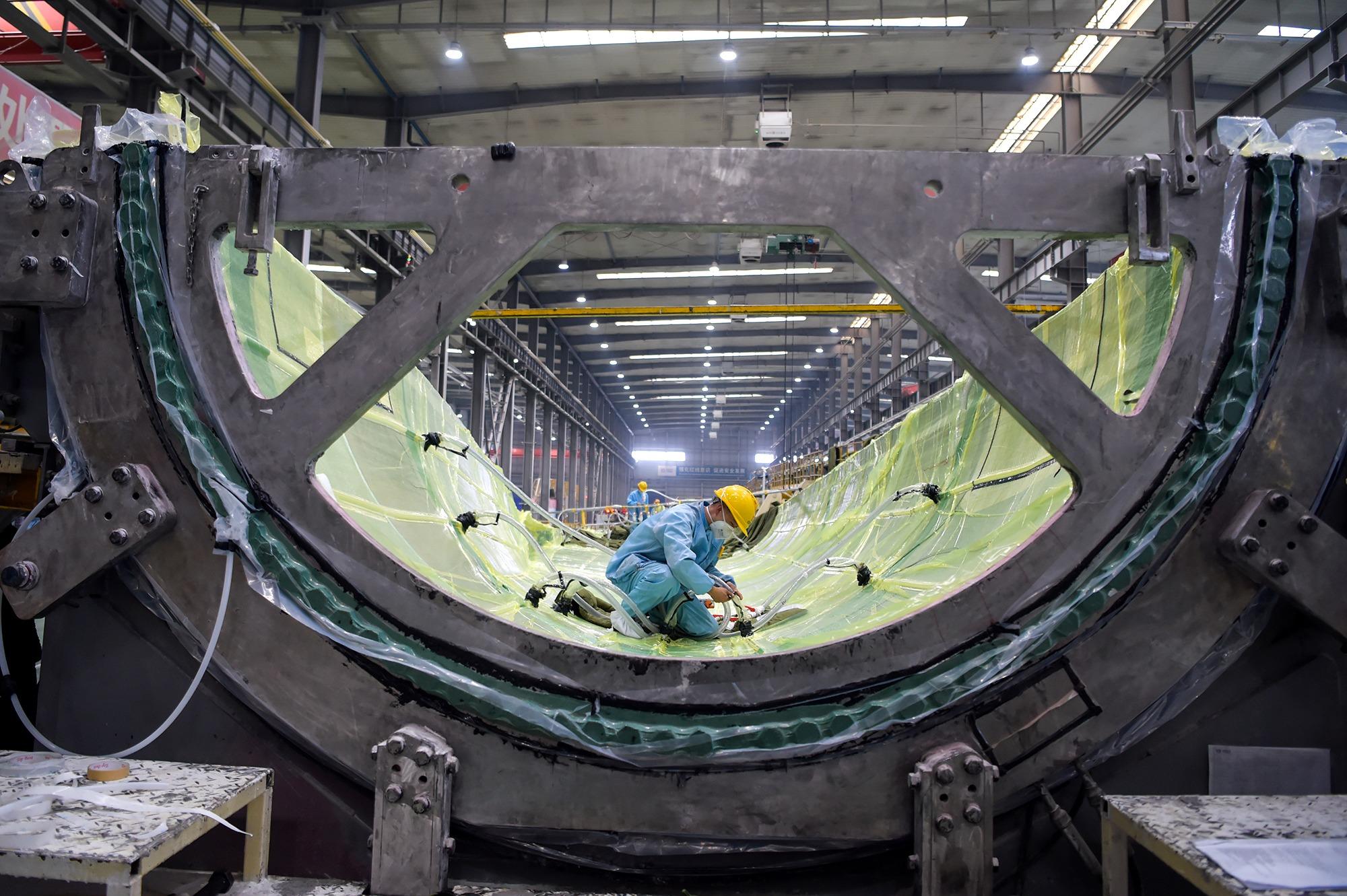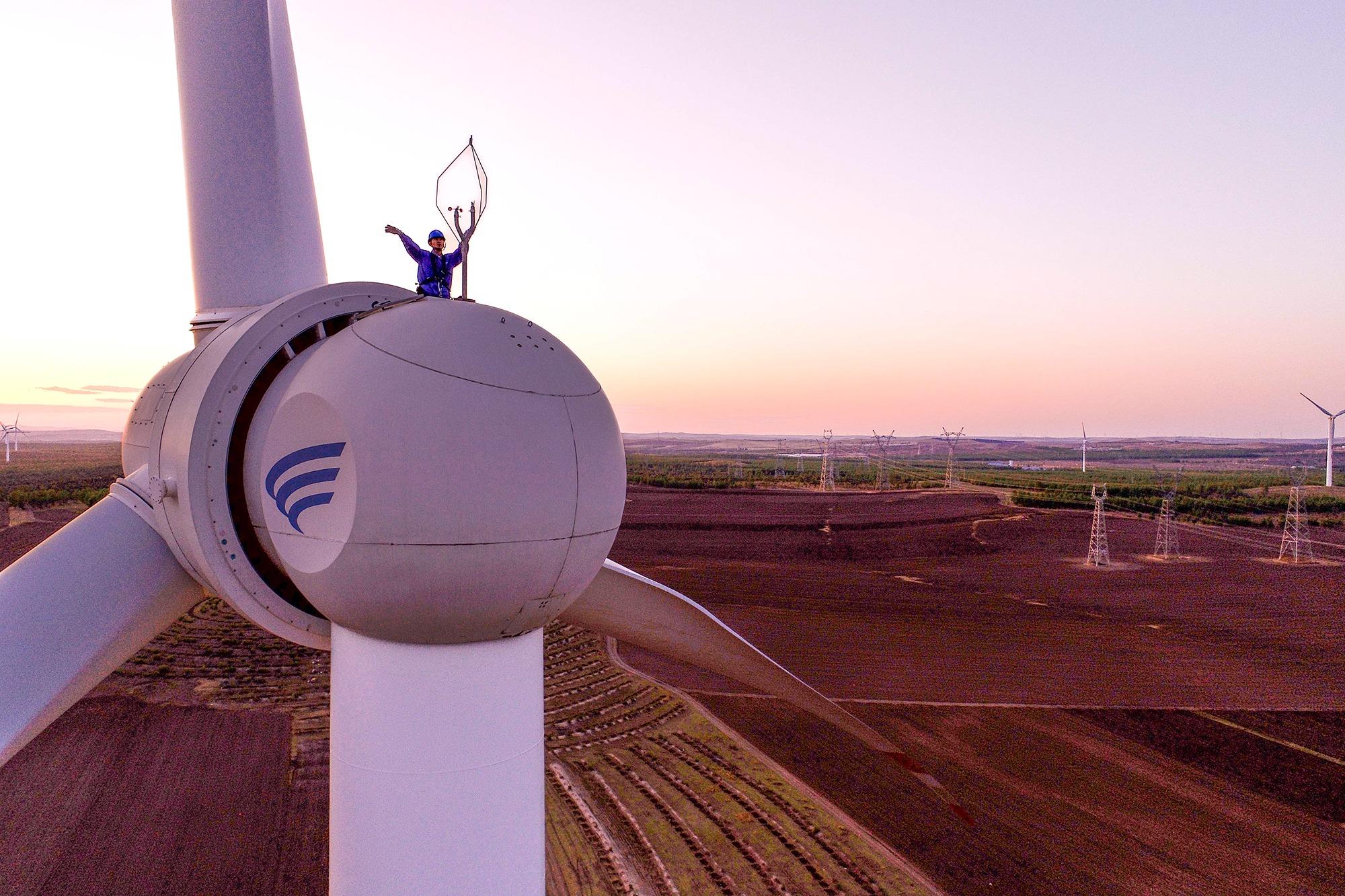Subnational joint action on environmental issues helps overcome national-level disruptions. Hou Liqiang reports.
 A view of solar panels placed on hilly areas in Zaozhuang, Shandong province, on Aug 10, 2023. Zaozhuang has been harnessing its favorable sunlight resources in its abundant mountainous and hilly terrain to promote green development. (PHOTO / XINHUA)
A view of solar panels placed on hilly areas in Zaozhuang, Shandong province, on Aug 10, 2023. Zaozhuang has been harnessing its favorable sunlight resources in its abundant mountainous and hilly terrain to promote green development. (PHOTO / XINHUA)
Despite some politicians in Washington trying to disrupt overall ties with Beijing in recent years, subnational efforts between China and California to address the looming global climate crisis have remained rock solid.
Subnational cooperation, which dates back decades, has also served as a bridge to help maintain links between the world's two largest economies amid the ups and downs of the relationship at the national level, experts and officials said.
Gavin Newsom, governor of California, paid a weeklong visit to China in late October, and a statement issued by his office after the trip highlighted the role his state plays in aiding the China-United States relationship.
"Because of California's history with China on climate cooperation, and our world-leading climate efforts, our state can serve as a bridge on one of the most consequential issues of our time," the statement said.
The important role of subnational cooperation was highlighted in a China-US joint statement on enhancing cooperation to address the climate crisis, which was made public following a meeting between China's special envoy for climate change Xie Zhenhua and his US counterpart John Kerry at Sunnylands, California, from Nov 4 to 7.
Three of the 25 clauses in the statement were about subnational cooperation. "China and the United States will support climate cooperation among states, provinces, and cities with regard to areas including the power, transportation, buildings, and waste sectors," it said.
Both sides will facilitate subnational governments, enterprises, think tanks and other stakeholders to actively participate in the cooperation, it continued. The two countries will meet periodically, as agreed, for policy dialogue, best-practices sharing, information exchange, and to facilitate cooperative programs.
China and the United States intend to hold a high-level event on subnational climate action in the first half of 2024. Both sides also welcome and appreciate existing subnational cooperation between the two countries and encourage states, provinces and cities to promote practical climate cooperation, the statement said.
 Wind turbine blades are ready to be transported in Yancheng, Jiangsu province, on Sept 12, 2023. (PHOTO / XINHUA)
Wind turbine blades are ready to be transported in Yancheng, Jiangsu province, on Sept 12, 2023. (PHOTO / XINHUA)
California greening
Zhang Jianyu, executive director of the BRI Green Development Institute and a veteran in China's environmental protection sector, believes green cooperation between California, which has long been a pioneer in US environmental protection, and China dates back to 1998.
That year, California Environmental Protection Agency officials paid a visit to China to look at cooperation over development of the circular economy, he said, referring to the model which focuses on reducing, reusing and recycling products.
Zhang also recalled a visit in 2013 by Mary Nichols, then chair of the California Air Resources Board, to Shenzhen, Guangdong province, to attend the inauguration ceremony for China's first emissions trading system.
During her visit, Nichols and Xu Anliang, then head of Shenzhen Development and Reform Commission, signed a memorandum of understanding, vowing to share policy design and early experiences from their carbon emissions trading programs.
Zhang said subnational cooperation between California and regions in China plays a major bridging role between the two countries, especially at a time when China-US cooperation has hit new lows, such as during the Donald Trump administration.
The conciliatory role subnational relationships play in enhancing country-to-country ties was endorsed by California. The statement from Newsom's office noted climate cooperation as an area of alignment that may "open the door to diplomacy".
"Continuing our partnership with China on climate is a way of keeping lines of communication open so that we can continue engaging on a host of issues," it said.
During his trip, the governor toured the Great Wall with Nicholas Burns, the US ambassador to China, according to Newsom's office.
The duo discussed the importance of the US relationship with China, how the subnational partnership can help ease national tensions, and areas of cooperation between the two countries, including climate action, economic development and tourism.
 An employee works on a component of a wind turbine in a factory in Ordos, Inner Mongolia autonomous region, on Feb 9, 2023. (PHOTO / XINHUA)
An employee works on a component of a wind turbine in a factory in Ordos, Inner Mongolia autonomous region, on Feb 9, 2023. (PHOTO / XINHUA)
Wider reach
During the trip, California signed MoUs with China's National Development and Reform Commission, Guangdong and Jiangsu provinces, as well as Beijing and Shanghai.
"These MoUs advance California and China's work on climate policy and help set the stage for national discussions and partnerships," the statement said.
According to the MoU signed with Jiangsu, California and the province will collaborate on clean energy deployment, especially offshore wind, and on nature-based solutions and efforts to protect biodiversity.
Newsom received positive feedback during his talks with Jiangsu Party chief Xin Changxing on a range of issues.
Xin vowed further efforts to strengthen two-way flow of trade and investment, cooperation on green development and tackling climate change, as well as people-to-people exchanges, all of which were expected to make contributions to the steady development of China-US relations.
Newsom's office said the governor's trip "has helped thaw relations and builds on the Biden administration's efforts to continue an open dialogue with China".
California has also signed an MoU with South China's Hainan province.
 A maintenance worker checks the status of a wind turbine generator at a wind farm in Hinggan League, Inner Mongolia, on May 23, 2023. (PHOTO / XINHUA)
A maintenance worker checks the status of a wind turbine generator at a wind farm in Hinggan League, Inner Mongolia, on May 23, 2023. (PHOTO / XINHUA)
The MoU with Hainan, which was signed in August in Sacramento, capital city of California, outlines five areas of climate cooperation: cutting air pollution; developing and implementing climate adaptation and carbon neutrality plans; advancing clean energy; accelerating zero-emission vehicles; and, driving nature-based solutions.
"Such cooperation is in line with the interests of both sides," Zhang said, adding such collaboration has been maintained despite changes in governing parties in the US.
Tang Xinhua, an associate researcher with the Institute of International Relations at Tsinghua University, underscored the important role cooperation between California and China can play in bridging gaps in the national relationship, even in the face of potential political interruptions following changes in the US presidential administration.
Despite emerging "uncertainties" in overall China-US cooperation due to the upcoming 2024 presidential election, subnational engagement will help maintain contacts between the two sides and provide the foundation for the potential resumption of cooperation, he said.
Subnational engagement is a key supplement to cooperation at the national level on climate issues, Tang said, as it usually involves practical action and strengthens the framework of cooperation between the two countries.
"Cooperation between the two countries' regional governments is usually more related to specific industries, such as renewable energy development, which are very tangible," he added.
Contact the writer at houliqiang@chinadaily.com.cn


